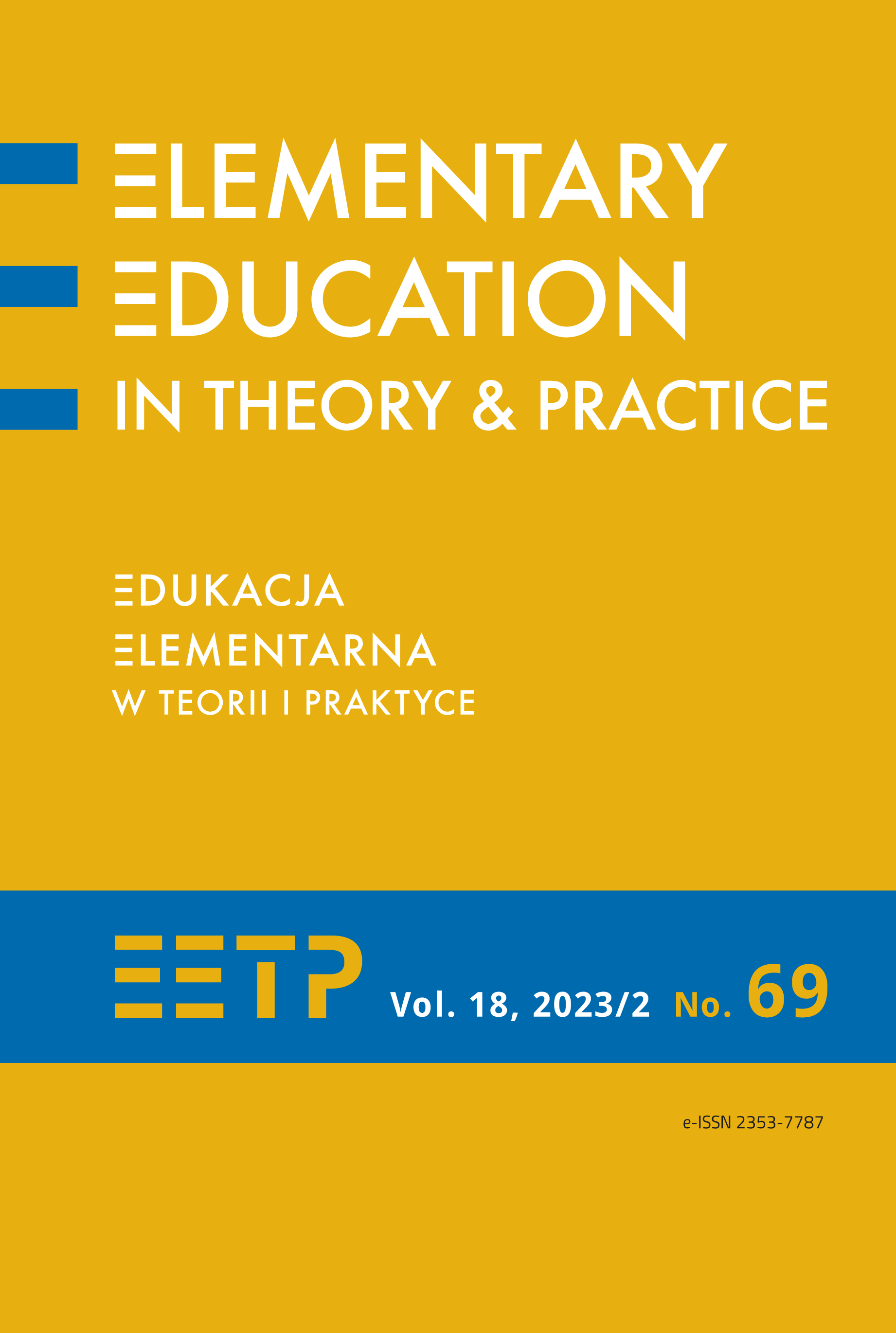How Do Acoustic Stimuli Influence Preschool Children’s Behaviour and Concentration?tration?
Abstract
The research aimed to find the positive and negative effects of acoustic stimuli on preschool children. It was divided into three parts: conducting surveys among parents and teachers on children’s behaviour and their daily acoustic conditions; measuring the sound pressure level in kindergartens; children-performed tasks in the presence of various sounds. The study showed that the sounds produced by the peers were the most distracting acoustic stimuli. It was observed that in the kindergartens where children tend to behave calmer and quieter, the results of tasks were much better, i. e. children are more willing to perform exercises, they do them quicker and focus on them for a much longer time. Sounds made by other children (especially sudden noises) often delayed the task’s completion or prevented it. It was also observed that if a sound was neither particularly interesting nor distracting for children, it had very little impact on the task performance. Attractive sounds caused delays, errors and, in some cases, they forced the children to completely ignore the instructions and focus on the appealing stimulus. Interestingly, road or domestic noise was almost imperceptible to children and had little impact on the tasks. Music, which children do not mind, proved to be a good masker of other distracting sounds.
References
Babisch, W. (2003). Stress hormones in the research on cardiovascular effects of noise. Noise Health, 5(18), 1–11.
Clark, C., Martin, R., van Kempen, E., Alfred, T., Head, J., Davies, H.W., Haines, M.M., Lopez Barrio, I., Matheson, M. i Stansfeld, S.A. (2006). Exposure-effect relations between aircraft and road traffic noise exposure at school and reading comprehension: The RANCH project. American Journal of Epidemiology, 163(1), 27–37. https://doi.org/10.1093/aje/kwj001
Haines, M., Stansfeld, S., Job, R., Berglund, B. i Head, J. (2001). Chronic aircraft noise exposure, stress responses, mental health and cognitive performance in school children. Psychological Medicine, 31(2), 265–277. https://doi.org/10.1017/S0033291701003282
Jabłońska, B. (2014). Socjologia muzyki. Wydawnictwo Naukowe Scholar.
Jiang, F. (2019). Sleep and early brain development. Annals of Nutrition and Metabolism, 75(1), 44–53. https://doi.org/10.1159/000508055
van Kempen, E., van Kamp, I., Fischer, P., Davies, H., Houthuijs, D., Stellato, R., Clark, C. i Stansfeld, S. (2006). Noise exposure and children’s blood pressure and heart rate: the RANCH project. Occupational and Environmental Medicine, 63(9), 632–639. https://doi.org/10.1136/oem.2006.026831
Öhrström, E., Hadzibajramovic, E., Holmes, E. i Svensson, H. (2006). Effects of road traffic noise on sleep: studies on children and adults. Journal of Environmental Psychology, 26(2), 116–126. https://doi.org/10.1016/j.jenvp.2006.06.004
Stansfeld, S. i Clark, C. (2015). Health effects of noise exposure in children. Current Environmental Health Reports, 2(2), 171–178. https://doi.org/10.1007/s40572-015-0044-1
Tiesler, C.M.T., Birk, M., Thiering, E., Kohlböck, G., Koletzko, S., Bauer, C.P., Berdel, D., von Berg, A., Babisch, W. i Heinrich, J. (2013). Exposure to road traffic noise and children's behavioural problems and sleep disturbance: Results from the GINIplus and LISAplus studies. Environmental Research, 123, 1–8. https://doi.org/10.1016/j.envres.2013.01.009
Topór, E. (2009). Wpływ muzyki oraz rola muzykoterapii w rozwoju dziecka. W: E. Krajewska-Kulak i C. Łukaszuk (red.), W drodze do brzegu życia (s. 163–171). Uniwersytet Medyczny w Białymstoku.
Copyright (c) 2023 Elementary Education in Theory and Practice

This work is licensed under a Creative Commons Attribution-NoDerivatives 4.0 International License.
- When submitting a text, the author declares that he/she is the Author of the article (hereinafter referred to as the “Work”) and:
- he/she owns the exclusive and unlimited copyright to the Work,
- is entitled to dispose of the copyright to the Work.
Declares that it does not infringe any third party copyrights or legal rights.
Declares that there is no conflict of interest.
2. At the same time, the Author grants the Ignatianum University in Cracowa royalty-free, non-exclusive and territorially unlimited licence to use the Work in the following fields of exploitation:
- recording the Work in a hard copy, as well as on a digital or magnetic medium;
- reproduction of the Work using any technique, without limitation of the number of editions or copies;
- distribution of the Work and its copies on any medium, including marketing, sale, lending, and rental;
- introduction of the Work into a computer memory;
- disseminating the Work in information networks, including in the Internet;
- public performance, exhibition, display, reproduction, broadcasting and re-broadcasting, as well as making the Work available to the public in such a way that everyone can have access to it at a time and place of their own choosing;
- within the scope of dependent rights to the Work, including in particular the right to make necessary changes to the Work resulting from editorial and methodical development, as well as to translate the Work into foreign languages;
The licence is granted from the moment of the transfer of the Work to the Ignatianum University in Cracow. The Ignatianum University in Cracow is entitled to grant further sub-licences to the Work within the scope of the right granted. The licence is time-limited and it is granted for a period of 15 years, starting from the date of its granting.
Authors are permitted and encouraged to publish their text online (e.g. in their institution’s repository or on the institution’s website) before or during the submission process as this may lead to beneficial exchanges, as well as earlier and greater citation of the published text (See The Effect of Open Access). We recommend using any of the following portals of research associations:
- ResearchGate
- SSRN
- Academia.edu
- Selected Works
- Academic Search




